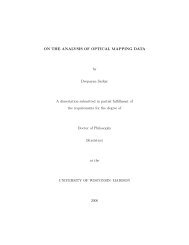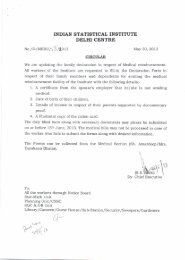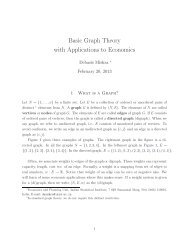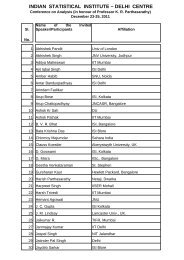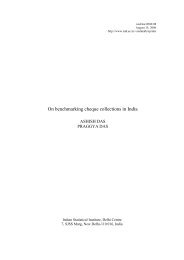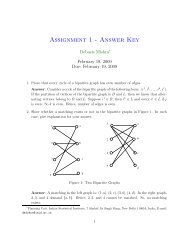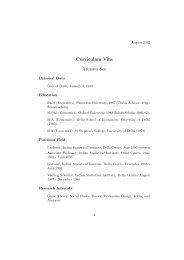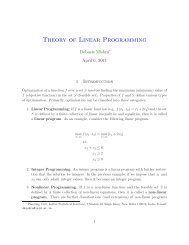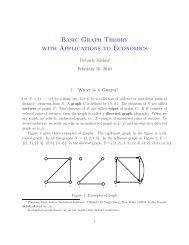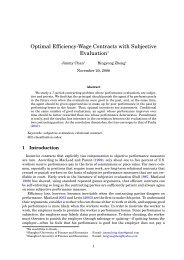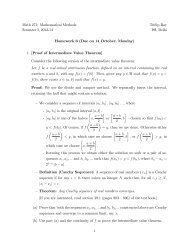Normal approximation to the hypergeometric distribution in ...
Normal approximation to the hypergeometric distribution in ...
Normal approximation to the hypergeometric distribution in ...
You also want an ePaper? Increase the reach of your titles
YUMPU automatically turns print PDFs into web optimized ePapers that Google loves.
y (CDF)<br />
S.N. Lahiri et al. / Journal of Statistical Plann<strong>in</strong>g and Inference 137 (2007) 3570 –3590 3575<br />
1.0<br />
0.8<br />
0.6<br />
0.4<br />
0.2<br />
0.0<br />
Hypergeometric<br />
B<strong>in</strong>omial<br />
<strong>Normal</strong><br />
-20 -15 -10 -5 0<br />
x (Standardised)<br />
Fig. 3. A plot of <strong>the</strong> cdfs of normalized Hypergeometric and B<strong>in</strong>omial random variables aga<strong>in</strong>st <strong>the</strong> standard <strong>Normal</strong> cdf for <strong>the</strong> parameter values<br />
N = 60, p = 0.9 and f = 0.7.<br />
y (CDF)<br />
1.0<br />
0.8<br />
0.6<br />
0.4<br />
0.2<br />
0.0<br />
Hypergeometric<br />
B<strong>in</strong>omial<br />
<strong>Normal</strong><br />
-20 -15 -10 -5 0<br />
x (Standardised)<br />
Fig. 4. A plot of <strong>the</strong> cdfs of normalized Hypergeometric and B<strong>in</strong>omial random variables aga<strong>in</strong>st <strong>the</strong> standard <strong>Normal</strong> cdf for <strong>the</strong> parameter values<br />
N = 60, p = 0.9 and f = 0.8.<br />
<strong>approximation</strong>; <strong>the</strong> maximal error of <strong>approximation</strong> <strong>to</strong> <strong>the</strong> B<strong>in</strong>omial (54, 0.8) <strong>distribution</strong> is 0.0803. However, with<br />
N = 60, n = 54 and p = 0.9, <strong>the</strong> maximal error of <strong>Normal</strong> <strong>approximation</strong> <strong>to</strong> <strong>the</strong> Hypergeometric <strong>distribution</strong> is as high<br />
as 0.4633, mak<strong>in</strong>g <strong>the</strong> <strong>approximation</strong> practically useless. With about a 9-fold <strong>in</strong>crease <strong>in</strong> <strong>the</strong> sample size, at n = 450,<br />
<strong>the</strong> accuracy of <strong>the</strong> <strong>approximation</strong> <strong>in</strong> <strong>the</strong> Hypergeometric case only improves <strong>to</strong> 0.1683 for <strong>the</strong> same values of f and p.<br />
The correspond<strong>in</strong>g maximal error for <strong>the</strong> <strong>Normal</strong> <strong>approximation</strong> <strong>to</strong> <strong>the</strong> B<strong>in</strong>omial <strong>distribution</strong> with parameters n = 450<br />
and p = 0.8 is only 0.0282. Thus, <strong>the</strong> loss <strong>in</strong> accuracy <strong>in</strong> this case is an as<strong>to</strong>und<strong>in</strong>g 600% compared <strong>to</strong> <strong>the</strong> B<strong>in</strong>omial<br />
5



